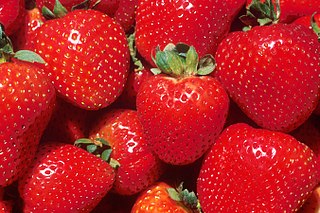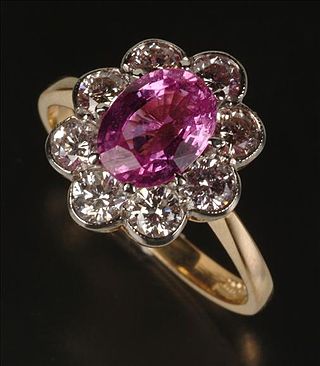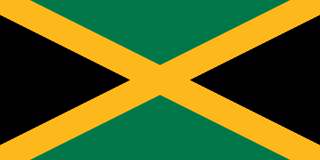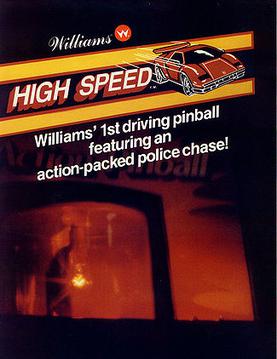Related Research Articles

Color blindness or color vision deficiency (CVD) is the decreased ability to see color or differences in color. The severity of color blindness ranges from mostly unnoticeable to full absence of color perception. Color blindness is usually an inherited problem or variation in the functionality of one or more of the three classes of cone cells in the retina, which mediate color vision. The most common form is caused by a genetic condition called congenital red–green color blindness, which affects up to 1 in 12 males (8%) and 1 in 200 females (0.5%). The condition is more prevalent in males, because the opsin genes responsible are located on the X chromosome. Rarer genetic conditions causing color blindness include congenital blue–yellow color blindness, blue cone monochromacy, and achromatopsia. Color blindness can also result from physical or chemical damage to the eye, the optic nerve, parts of the brain, or from medication toxicity. Color vision also naturally degrades in old age.

Green is the color between cyan and yellow on the visible spectrum. It is evoked by light which has a dominant wavelength of roughly 495–570 nm. In subtractive color systems, used in painting and color printing, it is created by a combination of yellow and cyan; in the RGB color model, used on television and computer screens, it is one of the additive primary colors, along with red and blue, which are mixed in different combinations to create all other colors. By far the largest contributor to green in nature is chlorophyll, the chemical by which plants photosynthesize and convert sunlight into chemical energy. Many creatures have adapted to their green environments by taking on a green hue themselves as camouflage. Several minerals have a green color, including the emerald, which is colored green by its chromium content.

Red is the color at the long wavelength end of the visible spectrum of light, next to orange and opposite violet. It has a dominant wavelength of approximately 625–740 nanometres. It is a primary color in the RGB color model and a secondary color in the CMYK color model, and is the complementary color of cyan. Reds range from the brilliant yellow-tinged scarlet and vermillion to bluish-red crimson, and vary in shade from the pale red pink to the dark red burgundy.

Yellow is the color between green and orange on the spectrum of light. It is evoked by light with a dominant wavelength of roughly 575–585 nm. It is a primary color in subtractive color systems, used in painting or color printing. In the RGB color model, used to create colors on television and computer screens, yellow is a secondary color made by combining red and green at equal intensity. Carotenoids give the characteristic yellow color to autumn leaves, corn, canaries, daffodils, and lemons, as well as egg yolks, buttercups, and bananas. They absorb light energy and protect plants from photo damage in some cases. Sunlight has a slight yellowish hue when the Sun is near the horizon, due to atmospheric scattering of shorter wavelengths.

Traffic lights, traffic signals, or stoplights – also known as robots in South Africa and Namibia – are signalling devices positioned at road intersections, pedestrian crossings, and other locations in order to control the flow of traffic.

Pink is the color of a namesake flower that is a pale tint of red. It was first used as a color name in the late 17th century. According to surveys in Europe and the United States, pink is the color most often associated with charm, politeness, sensitivity, tenderness, sweetness, childhood, femininity, and romance. A combination of pink and white is associated with innocence, whereas a combination of pink and black links to eroticism and seduction. In the 21st century, pink is seen as a symbol of femininity, though this has not always been true; in the 1920s, pink was seen as a color that reflected masculinity.
Color theory, or more specifically traditional color theory, is the historical body of knowledge describing the behavior of colors, namely in color mixing, color contrast effects, color harmony, color schemes and color symbolism. Modern color theory is generally referred to as Color science. While there is no clear distinction in scope, traditional color theory tends to be more subjective and have artistic applications, while color science tends to be more objective and have functional applications, such as in chemistry, astronomy or color reproduction. Color theory dates back at least as far as Aristotle's treatise On Colors. A formalization of "color theory" began in the 18th century, initially within a partisan controversy over Isaac Newton's theory of color and the nature of primary colors. By the end of the 19th century, a schism had formed between traditional color theory and color science.

A color wheel or color circle is an abstract illustrative organization of color hues around a circle, which shows the relationships between primary colors, secondary colors, tertiary colors etc.

The color amber is a pure chroma color, located on the color wheel midway between the colors of yellow and orange. The color name is derived from the material also known as amber, which is commonly found in a range of yellow-orange-brown-red colors; likewise, as a color amber can refer to a range of yellow-orange colors. In English, the first recorded use of the term as a color name, rather than a reference to the specific substance, was in 1500.
The opponent process is a color theory that states that the human visual system interprets information about color by processing signals from photoreceptor cells in an antagonistic manner. The opponent-process theory suggests that there are three opponent channels, each comprising an opposing color pair: red versus green, blue versus yellow, and black versus white (luminance). The theory was first proposed in 1892 by the German physiologist Ewald Hering.
In many languages, the colors described in English as "blue" and "green" are colexified, i.e., expressed using a single umbrella term. To render this ambiguous notion in English, linguists use the blend word grue, from green and blue, a term coined by the philosopher Nelson Goodman – with a rather different meaning – in his 1955 Fact, Fiction, and Forecast to illustrate his "new riddle of induction".

Jamaica coalition is a term in German politics describing a governing coalition among the parties of the Christian Democratic Union/Christian Social Union (CDU/CSU), Free Democratic Party (FDP), and the Green Party.

Emergency vehicle lighting, also known as simply emergency lighting or emergency lights, is a type of vehicle lighting used to visually announce a vehicle's presence to other road users. A sub-type of emergency vehicle equipment, emergency vehicle lighting is generally used by emergency vehicles and other authorized vehicles in a variety of colors.

In traffic engineering, there are regional and national variations in traffic light operation. This may be in the standard traffic light sequence or by the use of special signals.

High Speed is a pinball game designed by Steve Ritchie and released by Williams Electronics in 1986. It is based on Ritchie's real-life police chase inside a 1979 Porsche 928. He was finally caught in Lodi, California on Interstate 5 and accused of speeding at 146 miles per hour (235 km/h).
The current French railway signalling system is in force on the Réseau Ferré de France since 1930, when the code Verlant was applied.

Japanese railway signals, according to the ministerial decree defining technical standards of railways, are defined as indicating operational conditions for railway staff driving trains.

Impossible colors are colors that do not appear in ordinary visual functioning. Different color theories suggest different hypothetical colors that humans are incapable of perceiving for one reason or another, and fictional colors are routinely created in popular culture. While some such colors have no basis in reality, phenomena such as cone cell fatigue enable colors to be perceived in certain circumstances that would not be otherwise.
Color symbolism in art, literature, and anthropology refers to the use of color as a symbol in various cultures and in storytelling. There is great diversity in the use of colors and their associations between cultures and even within the same culture in different time periods. The same color may have very different associations within the same culture at any time. Diversity in color symbolism occurs because color meanings and symbolism occur on an individual, cultural and universal basis. Color symbolism is also context-dependent and influenced by changes over time. Symbolic representations of religious concepts or articles may include a specific color with which the concept or object is associated.
A stoplight is a traffic signaling device.
References
- 1 2 "ZTA Stoplight Party highlights busy week". Central Michigan Life . April 16, 2004. Archived from the original on 19 October 2009. Retrieved September 17, 2021.
- ↑ "Aura Nightclub Stoplight Party". Eventbrite . Five Star Entertainment. July 30, 2010. Archived from the original on July 20, 2012. Retrieved September 17, 2021.
- ↑ "No Mixed Signals At Stoplight Parties". Wilmington Star-News . Feb 12, 2006. Retrieved 28 January 2013– via Google Newspapers.
- ↑ Salute, Chris (10 November 2005). "Red light, green light". Independent Record (Helena, Montana) . Archived from the original on 22 December 2017. Retrieved 6 April 2022.
{{cite news}}: CS1 maint: unfit URL (link) - ↑ "Fashion: Stop! In the name of love". Orange County Register . 23 November 2005. Retrieved 6 April 2022.